Matador Network's Blog, page 4
October 7, 2025
Aston Kaʻanapali Shores Is an Affordable Family Stay With Luxurious Space and Beachfront Views

In August 2023, Aston Kaʻanapali Shores on the west side of Maui stopped being a vacation resort and became a lifeline for those impacted by the devastating wildfire that destroyed the nearby historic town of Lahaina. Staff canceled incoming tourist bookings and welcomed neighbors who had lost everything, and Red Cross volunteers set up aid stations.
On a recent trip two years later, the resort once again looked like the subject of an only-in-Hawaiʻi postcard as I chased my two-year-old daughter, Margot, between the pool and the beach alongside my wife Heather and 1-month-old son Wally.

Photo: Nickolaus Hines
This condo resort built in the 1980s offers a luxurious amount of space, kitchens, and easy access to both the Pacific and community spots. It’s an ideal base for families looking to explore West Maui with plenty of breaks in between for relaxation (or at least as much relaxation as you can get with young ones around).
This was our first family trip to Hawaiʻi. The choice was a perfect fit for traveling with young ones: less splashy (or quiet) luxury, and more of a home-away-from-home vibe.
We hope you love the spaces we recommend! Just so you know, Matador may collect a small commission from the links on this page if you decide to book a stay. Listed prices are accurate as of the time of publication.
The Rooms at Aston Kaʻanapali ShoresThere’s no getting around the fact that a trip to Hawaiʻi is expensive no matter who you’re traveling with. Aston Kaʻanapali Shores hits a sweet spot that’s hard to find at resorts elsewhere across the islands. What really helps for families: kids under 17 stay free. Depending on the month, you can book a standard room for as low as about $250 per night before taxes, and just over $1,000 per night for top suites.
The Junior Suites are 600 square feet with a full kitchen and a private lanai (covered patio). One-Bedroom Suites expand with the option between a Garden View to look out over the verdant, palm-filled central courtyard, or Ocean View for an outlook of the beach and islands beyond. Families and groups will find space in the Two-Bedroom Suites, which have about 1,200 square feet to spread out with full kitchens, separate living and dining areas, and balconies made for lingering. At the top, the Oceanfront Aloha Suite and the Penthouse double down on space with 2,000 square feet, panoramic views, and higher-end appliances.
We stayed in a Two-Bed, Two-Bath Oceanfront Aloha Suite. Margot had to stop to take a breath before we reached the end of the hallway to our door, then did one of her signature surprised inhales as the door opened and she saw even more space to run through before reaching the sliding glass doors to the wraparound balcony.
It wasn’t long before the contents of our luggage exploded across the room (two kids under 3 may have small clothes, but they sure fill a suitcase). Even adding in two pack-and-plays, the space never felt crowded. We lightly stocked the fridge with breakfast staples from the grocery store across the street and piled fruit and snacks on the counter.

Photo: Nickolaus Hines
Throughout our stay, we rotated our preferred spot on the balcony. We ate breakfast on the courtyard side and lounged on the ocean side, watching a pod of dolphins leap past one afternoon.
We had just one complaint during our stay: though we had a two-bedroom, one of them was useful only for storing our stuff. The air conditioning runs on motion sensors in each room. My sleeping toddler didn’t trigger the unit, so the room got hot and muggy enough that we moved her in front of the sliding balcony doors after the first night.
BookWhat to do at Aston Kaʻanapali ShoresWe set our sights on the ocean the minute we touched down. But after getting our luggage, picking up the rental car, making the drive from the airport, checking into the hotel and dropping our stuff, and grabbing a long-overdue meal, it was dark. Margot and I weren’t deterred.
We walked less than a minute down to the beach. The starlight and moon reflecting off the calm water were the brightest lights once we kicked off our shoes at the top of the stairs and put our feet in the sand. The waves were no bigger than the wake from a small lake boat, but still crashed louder than the sound of the cocktails being shaken at the nearby pool bar.
When you have a kid who wants to be as close to the water for as much time as possible, this proximity is worth more than any other amenity: morning light walks, afternoon swimming, nighttime sand sitting.
That said, there’s plenty more to do. Two pools — one kid-friendly with water features and a splash area for the littlest ones, one next to the bar — offer an alternative if salt water isn’t your thing. The property has a pickleball court sitting right in front by the entrance. Cultural activities like a local makers’ market, Hawaiʻian weaving, and hula and ukulele lessons are held on the main lobby floor. A spa, fitness center, sauna, shuffleboard court, and RedBox-style DVD-rental kiosks are also available.

Photos: Nickolaus Hines
On our last day, Margot and I joined a lei-making class in the lobby. The instructor, and the other guests, had some doubts as I sat my toddler at the table. Lei involve a fair amount of hand-eye coordination to open the orchids, weave through a long and sharp needle, and then thread the flowers together. We found our rhythm, Margot opening up the flowers and me handling the sharp ends, thanks to our instructor who was game to help after clarifying she wouldn’t be responsible for pricked fingers — mine or Margot’s. We ended up making two short leis just as fast as the rest of the table and Margot wore hers the next day until the flowers drooped past wearability.

Photo: Nickolaus Hines
There’s no shortage of options when you want to explore off the property. The Maui Ocean Center is worth a day trip to learn about the incredible sea life and history of the area, and beaches, blowholes, waterfalls, and mountain hikes are readily accessible by car without driving more than an hour.
BookDining at Aston Kaʻanapali ShoresMany of our family’s happiest memories happen in the kitchen. Having access to a full kitchen in our room also meant cutting back on food costs. While exploring the local grocery store for snacks and something to make a meal is always a joy, seeing the surrounding food scene is one of our top activities regardless of where we go.
The pull for food, and fast, after we got our room led us to Honoapiilani Food Truck Park for dinner. We walked the long driveway and a block over, past the busker with a small amp playing Sublime and Billy Joel covers. It was immediately clear the gravel in the fenced food truck park is not designed for strollers. Kids in our arms and strollers at a table, we did some recon of the food trucks that largely focused on burgers, fish, and cuisines from across the Asian diaspora. The crowd was a mix of tourists with a just-landed look and teens on dates.
View this post on InstagramA post shared by Aston Kaanapali Shores (@kaanapalishoresresort)
We chose the only Hawaiʻian food truck that day and ordered poke two ways and a starter. I tried not to react to the sticker shock of paying $70 for a food-truck meal for three as we sipped our POG and guava sodas. Thankfully, the food didn’t disappoint: fresh fish (tuna and local catch of the day), poi, rice, and macaroni salad. We ate until it was dark and the fruit stand at the entrance started to box up its handful of remaining papayas, pineapples, and mangos.
After putting the kids down, I walked across the street to the Times Supermarket and picked up fruit, breakfast staples, Hokkaidō butter-flavored rice crackers, and a bottle of pineapple sparkling wine for the next morning’s meal.
View this post on InstagramA post shared by Aston Kaanapali Shores (@kaanapalishoresresort)
Aston Kaʻanapali Shores has one restaurant on the property, The Beach Club, which serves indulgent breakfasts, lunch, and island-inspired dinners. We stopped for lunch just as food service started again alongside the bar with humming blenders that clearly do not get a lunch break. Burgers, fried fish, and mac and cheese quickly hit our table, and birds flitted next to us shortly after to grab each french fry Margot dropped when she spotted a lizard sunning itself. The prices were reasonable for the island, especially considering the view, and the lunch menu straightforward. A bigger dinner with options like shrimp, barbecue ribs, and kalua pork waits anyone who wants to skip the in-suite cooking.
If you have a car, there are stand-out restaurants that welcome the full family a short drive away. Don’t miss Coco Deck in Lahaina and Merriman’s in Kapalua.
BookGetting to Aston Kaʻanapali ShoresMaui’s Kahului Airport is at the northern pinch point where West Maui meets East Maui, and is about an hour’s drive along the south side of the island to Aston Kaʻanapali Shores depending on traffic. There are taxi and rideshare options from the airport, but the costs add up quickly if you plan to go beyond your accommodations. Renting a car from the airport is worth it for anyone taking a longer stay and wants to explore more of the island. 
Kyoto Raised Its Per-Person Hotel Tax Up To 900% to Combat Overtourism

For travelers dreaming of wandering through Kyoto’s zen gardens and peaceful ancient shrines, your trip just got a little more expensive — at least for luxury travelers. In a bid to manage growing tourist crowds, the city just approved the country’s steepest hotel tax to date, charging up to 10,000 yen (about $65.90) per person, per night, for those staying at high-end accommodations in Kyoto. The new tax goes into effect in March of 2026, in time for the country’s busy cherry blossom season.
It’s not just a revenue generation plan, but also a strong signal that the city is taking overtourism seriously. It represents a 900 percent increase in the maximum tourists may pay per night, as the current tax is capped at 1,000 yen per night.

Photo: javarman/Shutterstock
Kyoto’s popularity has surged to all-time highs. The city welcomed 10.88 million foreign tourists in 2024, with another 56 million domestic tourists. It was a drastic jump over 2023, which saw 50.28 million total visitors to Kyoto. It’s a travel boom seen in other towns in Japan as well, with the country seeing 36.87 million international visitors in 2024 — more than 10 million more than it saw in 2023. Tourist visits to the country have been growing exponentially since 2023, the first year it surpassed 10 million international visitors.
Kyoto, with its UNESCO-listed temples, impossibly sculpted gardens, and postcard-perfect alleys, is seeing more than its fair share of that growth. While it’s economically beneficial to some degree, it’s also led locals to raise concerns about issues like overcrowded public transportation and attractions so crowded that schools have cancelled class field trips. Geishas in traditional parks of the city have been swarmed by foreign tourists trying to take photos, waving selfie sticks is banned in many parts of the country, and famous Mount Fuji introduced daily caps on tourist numbers.
View this post on InstagramA post shared by South China Morning Post (@scmpnews)
For Kyoto, it seems the answer is raising its tourist tax. The proposal was approved by the national government in early October 2024, and includes a tiered pricing system, rather than a percentage of the hotel room cost. The per person, per night fee for budget lodgings (under 6000 yen, or about $40), will stay the same, at 200 yen per night (about $1.32). Guests at hotels costing up to $133 per night will pay 400 yen (about $2.66) per person, while tourists at hotels costing up to $332 per night will be charged 1000 yen each (about $6.64).
Travelers staying at luxury hotels will see the biggest increases in taxes. Hotels priced between $332 and $664.50 will pay 4,000 yen, or about $26.58, per night. And visitors booking the priciest hotels — those costing $664.50 per night or more — will pay 10,000 yen, or about $65.80, per person, per night. All charges are per person, so a couple in a luxury ryokan will pay an extra $133 per night starting in March 2026. Until then, the fee is only $6.58 per person, per night.
The announcement from the city notes that the tiered system is designed to promote sustainable tourism and collect funds from visitors who can afford to pay more without straining budget travelers. Student groups are exempt from the tax.
When it goes into effect, it’ll be the highest tourist tax in all of Japan, with other busy cities like Tokyo and Osaka charging only a few hundred yen per night. According to Japanese news sources, the revenue will be used for improved transportation, public services, and projects to protect the city’s many cultural sites. City officials said they expect the new tax to bring in roughly $82 million (12.6 billion yen) next year, as opposed to the $32.8 million (about 5.91 billion yen) it’s brought in since it was introduced in 2018. The 2026 increase will be the first time the city has raised the tax.

At $100 per day, Bhutan’s :Sustainable Development Fee” is one of the steepest tourist taxes in the world. Photo: Framalicious/Shutterstock
The rate at which Kyoto raised its tourist tax is making headlines, but it’s hardly the only destination asking tourists to fund overtourism-related projects. Tourist taxes have existed throughout Europe since 1910, when Rome introduced a tassa di soggiorn, or stay tax, to fund city infrastructure repairs. In 2025, Venice tested a five-euro entrance fee for day trippers, and officials in Rome have suggested charging a fee to visit specific public attractions, like the Trevi Fountain. Recently, Amsterdam in the Netherlands announced an aggressive plan to battle overtourism, which includes a nightly tax of seven percent, based on the nightly hotel rate.
While those fees bring in funds, the low rates don’t necessarily deter tourists. However, some countries have rates high enough that they may keep some visitors away, such as Bhutan. The Himalayan kingdom charges a $100 per night, per person fee for international visitors, and fragile Volcanoes National Park in Rwanda charges foreign visitors $1,500 to spend one hour with the park’s critically endangered mountain gorillas. In the US, popular destinations like New York and San Francisco have tourist taxes based on hotel rate, with NYC charging up to 14.75 percent per night. 
October 6, 2025
These 10 US Airports Offer the Most Routes to Destinations Around the World

There are a lot of selling points when it comes to tiny airports, from being able to park without taking a shuttle bus to regularly getting through the TSA security line in less than five minutes. However, if you value being able to go where you want, when you want, it’s the US’s major airports that come out on top.
That’s the main takeaway from the new Megahubs report from OAG Aviation Worldwide Limited, a UK-based source for global aviation data that’s been collecting airport statistics since 1929. The recent report analyzed airports around the world to find out which are the “most connected,” meaning they offer the most connections to the most destinations within a set time period. It’s an indicator not just of how many places an airport flies to directly, but of how easy it is to transfer between flights. A well-connected airport will have shorter layovers and more flight options, which may also increase your chances of quickly getting rescheduled if you miss your flight.
Worldwide, the top spot for the most connected airport went to London’s Heathrow Airport, which also took the top spot in 2023 and 2024’s report. “London Heathrow (LHR) retains its title as the world’s most connected airport for the third consecutive year,” the authors noted, “offering over 59,000 possible connections to 226 destinations on the busiest day” (which was August 1, 2025). Rounding out the top five were Istanbul Airport in Türkiye (which rose from number eight in 2024), Amsterdam in the Netherlands, Kuala Lumpur International Airport in Malaysia, and Frankfurt International Airport in Germany.

A terminal at Chicago O’Hare. Photo: 4kclips/Shutterstock
But for travelers in the US, what’s most important are the best-connected airports in their home country. And for that, travelers who live near major airports are the luckiest.
Chicago O’Hare International Airport leads the rankings, reclaiming its first-place position from 2024, when it tied with Atlanta Hartsfield-Jackson International Airport. But it had the sole first place in 2025, serving 214 destinations (nine more than 2024) on the busiest day of the year. However, Atlanta Hartsfield-Jackson International Airport still rated highly, taking the second-place spot for connectivity. Dallas/Fort Worth International Airport, the main base for American Airlines, came in third place last year and this year, with Denver International Airport coming in at number four. Charlotte Douglas International Airport, also a key American Airlines hub, took fifth place.
The rest of the top 10 includes Los Angeles International, Phoenix Sky Harbor, Houston George Bush Intercontinental, Minneapolis-St. Paul, and Detroit Metropolitan Airport.
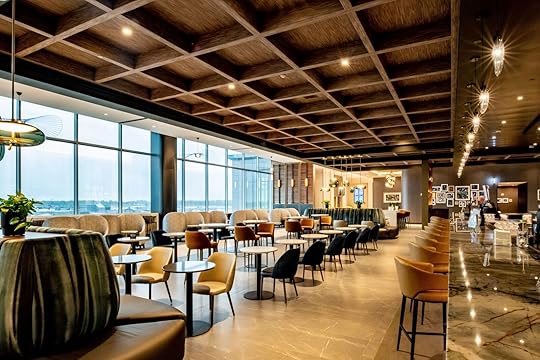
Delta Air Lines’ lounge in the Atlanta Airport. Photo: Delta Air Lines
The Megahubs report is focused on airports, not airlines. But the data makes it clear that some airlines have the lion’s share of flights at certain airports. Delta Air Lines, for example, dominates Atlanta Hartsfield-Jackson, from which it flies a huge number of domestic and international routes. American Airlines has a similar arrangement at both Dallas/Fort Worth and Charlotte, while United Airlines has the most connectivity at O’Hare and Houston. So if you’ve yet to choose a loyalty program, you may want to decide based on which airline is the most connected at your home airport.
Airlines are also most likely to build their nicest lounges in their major hubs. They’re often the nicest in the entire airport. So if you’re in that loyalty program and have a high enough status to gain lounge access, you’ll be able to use some of the largest and most modern lounges in the country before you take off.

Airports with better connectivity mean you’re more likely to get booked on a later flight if you miss your connection, rather than sleeping in airport. Photo: Grusho Anna/Shutterstock
When analyzing flight options, most travelers consider cost and total flight time the most important factors. But if you have multiple similar options, selecting the one that goes through one of the most-connected airports may give you a broader range of options in the event of delays or cancellations. Flying through a well-connected airport could be the difference between being rerouted onto a flight a few hours later, or having to unexpectedly spend the night at an airport hotel.
Travelers could also use this data to determine which frequent flyer program they should join — or, in extreme cases, if they should consider asking a different airline for a status match. For example, travelers who primarily use O’Hare in Chicago will likely find that United Airlines offers the most flights for any given destination, so participating in United’s MileagePlus program means the ability to earn miles for almost any route they want to fly. But a traveler loyal to another program would have to choose between fewer options on their airline of choice, or flying on an airline (United) without earning miles.
You can see the full results, and learn about the methodology, on the OAG Aviation website. 
United MileagePlus Members Now Get Free Instacart Delivery Before and After Flights

United Airlines and Instacart announced a new partnership October 6 that integrates Instacart’s grocery delivery service into United’s MileagePlus loyalty program, offering members a range of travel-adjacent benefits — including waived delivery fees and the ability to earn miles on qualifying orders.
The collaboration, which both companies say is the first of its kind between a major airline and a grocery delivery platform, is aimed at streamlining errands around the travel experience. MileagePlus members who link their accounts with Instacart can now earn United miles through everyday grocery purchases and access free delivery windows tied to their flight itineraries.
United MileagePlus deliveries with Instacart:Zero delivery fees for seven days on eligible Instacart orders placed before, during, or shortly after a domestic United flight.5,000 bonus miles for new Instacart users who complete four orders of $35 or more within eight weeks.500 bonus miles for existing Instacart users who link their MileagePlus account and place an order of at least $35 within 60 days.Additional 5,000 miles for MileagePlus members who sign up for an annual Instacart+ membership and maintain it for at least 30 days.The move builds on United’s non-travel partnerships designed to extend the value of its loyalty ecosystem beyond airports and actual flying. Earlier in 2025, United and Chase refreshed their co-branded credit cards to include Instacart benefits for eligible cardmembers. This new collaboration expands access to all MileagePlus members regardless of credit card enrollment.
“We’re always looking for new ways to make our loyalty program even more valuable for our members,” Richard Nunn, CEO of United MileagePlus, said in a press release. “This Instacart collaboration gives members the peace of mind to know they can add groceries and other essentials at just about any stage of their trip.”
Instacart currently partners with over 1,800 retailers and supports nearly 100,000 store locations across the US and Canada. United’s MileagePlus program has millions of members and remains one of the most actively used loyalty programs in the airline industry. MileagePlus members can take advantage of the partnership by enrolling at United.com/Instacart. 
Where to Play, Eat, and Stay on a Trip to The Alamo in San Antonio, Texas

I expected the ongoing restoration of The Alamo — the historic Spanish mission in San Antonio that was originally called Mission San Antonio de Valero — to disrupt my recent visit. Instead, I found the planned changes to be just another interesting chapter in the fascinating story of this legendary place.
The Alamo is renowned for its pivotal role in Texas’s fight for independence from Mexico. It’s where Davy Crockett made the last stand of his life, fighting alongside other Anglos and Tejanos (Texans of Mexican origin) at the 1836 Battle of the Alamo. The only remaining original buildings are the Alamo Church and Long Barrack, whose construction began in 1724. Today, an ambitious restoration effort aims to reclaim the original footprint of The Alamo grounds.
Visiting The Alamo and beyond: A stop-by-stop guideStop 1: The Alamo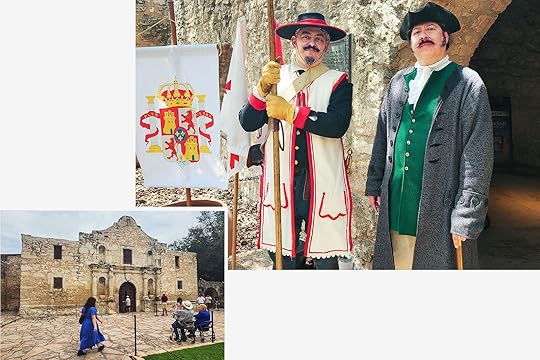
Photos: Devin Reese
Despite construction cranes adjacent to the visitor area, entering The Alamo quickly transports you into the past. Reenactors in the courtyard demonstrate traditions of the Tejanos and Anglos who lived at the mission during the lead-up to the Battle of the Alamo.
Founded as a Catholic mission in 1718 by Spaniards aiming to spread Christianity to Indigenous tribes, The Alamo transitioned to a military encampment in 1803 that would eventually hold about 200 Texans — both Anglo and Tejano — taking a stand for independence.
Inside the Long Barrack, the original stone walls are lined with historical artifacts and interpretation. You can pay extra for an augmented reality experience. When you scan exhibit insignias, they come to life on a tablet with animated, talking characters in 3-D scenes. By sliding a button, you can visually transition from 1836 to the present, seeing how people, buildings, and landscapes have changed over time.
Entering the Alamo Church, you can’t help but feel the sobering intensity of its past. After the Texas rebels drafted an independent constitution, Mexico sent a party of about 1800 soldiers to The Alamo that overwhelmed the much smaller group of Texas defenders.
During a bloody battle lasting only 90 minutes, explained docent Miguel to a rapt set of visitors, “Mexican soldiers dragged the Texas rebels out of the church and assassinated every one of them in the courtyard.” The original walls of The Alamo, according to Miguel, were graced with floral fresco paintings, but even now bare, the walls felt hallowed.
The Alamo: 300 Alamo Plaza, San Antonio, TX, 78205
Stop 2: San Antonio’s other missions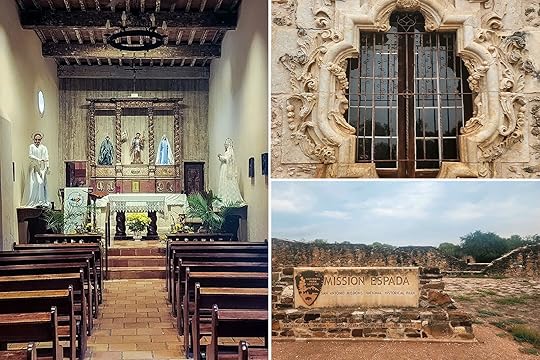
Photos: Devin Reese
Because of its significant role in history, The Alamo is the most famous of San Antonio’s Spanish missions, but it’s by no means the most beautiful. The other four missions, scattered at approximately three-mile intervals southward along the winding San Antonio River, were built in various stages during the 18th century, as “New Spain” was settled by the Spanish Empire. Indigenous tribes — referred to collectively as Coahuiltecan by the Spaniards — were recruited to live at the missions and learn Christianity.
Each mission has its own character. The southernmost Mission Espada includes an aqueduct that still carries water and a garden of flowers that brings the old buildings to life. The largest mission, San José, dubbed the “Queen of the Missions,” is steeped in lore around a baroque-style rose-colored window. The National Park Service staff describes alternate explanations for the significance of the rose window. In one interpretation, a carpenter created it as a tribute to his sweetheart who died at sea. In another, the window was made as a gathering spot for Mission events.
San Antonian Rosa Miller, raised in Mexico, who traveled with me, said, “Many San Antonio Catholics retain a deep, reverent connection to the missions.” The four missions other than The Alamo still serve as active parishes, offering Sunday Catholic Mass. You can hear the original mission bells peal to call people to Mass or to mark other religious occasions.
Given their significance in the history of the Spanish Crown’s colonization of the New World, the San Antonio Missions were designated a UNESCO World Heritage site in 2015. Said Director Colleen Swain of the World Heritage Center, whom I met en route, “There are many other Spanish Missions in the West, but here the restored Mission Reach of the river was a major factor in securing the World Heritage designation.”
Mission Espada: 10040 Espada Rd, San Antonio, TX 78214
Mission San José: 701 E Pyron Ave, San Antonio, TX 78214
Mission Concepción: 807 Mission Rd, San Antonio, TX 78210
Mission San Juan: 9101 Graf Rd, San Antonio, TX 78214

Photo: Devin Reese
At a museum that offers a blend of “history, art, and Texas heritage,” you can soak up more juicy details of Texas history. Although a large space is dedicated to natural history with realistic taxonomy scenes and a live animal room, I spent my time in the Robert J. & Helen C. Kleberg South Texas Heritage Center, a snapshot of life in 1849 San Antonio. Original artifacts such as road signs, fiddles, and wood barrels provide focal points for exhibits. It was also fun to peek inside recreated colonial dwellings or ride the wooden horse alongside life-sized historic figures on horseback.
The Witte Museum: 3801 Broadway, San Antonio, TX 78209
Stop 4: San Fernando Cathedral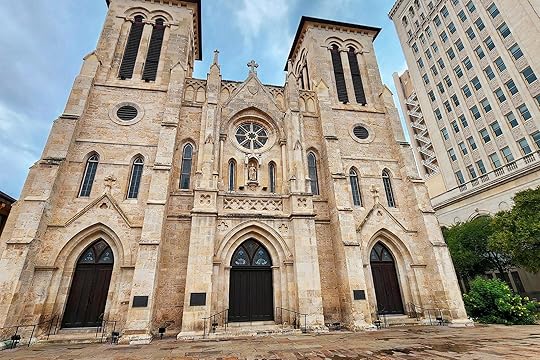
Photo: Devin Reese
You can wrap up your evening watching a light show at the San Fernando Cathedral in the city’s historic main plaza, a short walk from The Alamo. In a nightly 9 PM presentation called “The Saga,” an array of colorful images is projected onto the face of the Cathedral. I expected the show to chronicle San Antonio’s history, but the presentation was more art than history lesson. It’s an evocative array of images, sounds, and music that honors San Antonio’s character through its many eras, from Indigenous roots to the present.
San Fernando Cathedral: 115 Main Plaza, San Antonio, TX 78205
Where to eat near The AlamoPearl Farmer’s MarketView this post on InstagramA post shared by Historic Pearl (@historicpearl)
When the Pearl Brewery was purchased and transformed into Hotel Emma in 2001 (more on that below), the area around it was also revitalized to become what’s now called The Pearl (District). It’s home to shops, restaurants, and a lively farmer’s market that appears to be a gathering spot for locals and tourists. Even on a drizzly day, I encountered a couple of dozen vendors offering everything from local honey to homemade pasta, Indian samosas, and fresh produce. You could happily spend a morning grazing your way through the market, which is open from 9 AM to 1 PM on Saturdays and Sundays with periodic special events.
Pearl Farmer’s Market: 312 Pearl Parkway, San Antonio, TX 78215
Pullman Market
Mesquite. Photo: Devin Reese
An enthusiastic volunteer at the Pearl Farmer’s Market information booth said to me, “You must go see the Pullman Market down the way,” and she was right. Pullman Market, while much newer than the old Pearl Brewery building, retained historical character with vendors selling traditional goods: freshly baked breads, cuts of fish and meat, locally made cheeses, dried flowers, and other products highlighting regional producers.
Besides various stands to grab a quick burger or salad, inside Pullman Market are four distinct restaurants. My host Emilie DuJour took me to lunch at Mesquite, which serves up the cuisine of the Sonoran region of northwest Mexico. The menu was small but interesting, including ingredients like recado negro (a mix of chiles and spices of Maya origins) and escabeche (Mexican pickled vegetables), which required some explanation.
We ordered one of Emilie’s favorite appetizers: a calabacitas dip made of squash, corn, and Mexican cheese. I chased that with the pescado frito (fried fish) tacos. With a topping of cabbage slaw, avocado purée, and criolla (salsa with finely chopped vegetables), they were creamy and flavorful. The waiter proudly described the chef’s method for making the fish batter extra fluffy by injecting a bit of CO2.
Pullman Market: 221 Newell Avenue, San Antonio, TX 78215
Where to stay near The AlamoHotel Gibbs
Photo: Devin Reese
A stone’s throw from The Alamo are several historic hotels dating to the late 19th century, including the 1859 Menger Hotel and 1909 Crockett Hotel (the latter named after Davy Crockett). I stayed at the historic Hotel Gibbs in a high-rise building erected in 1909 for offices. The Hotel Gibbs — by blending original architecture with modern features — offered the best of both worlds. The working elevators were hidden behind the old elevator doors, which sometimes open to let ghosts through, according to local lore. From my spacious, well-appointed room, I had a view of a grand Beaux-Arts federal building conceived at the turn of the 20th century and still in use as the Hipolito F. Garcia Federal Building and United States Courthouse.
One evening, I dipped into the hotel’s FlorVino wine bar for one of its free tastings and was bowled over by the fragrant flower wines. The sommelier, Lewis Bonjean, explained how his uncle Hugo, descended from a lineage of French winemakers, pioneered making wines from flower petals and nectar in Canada. These unique wines made their way to Texas. Lewis described the source for the “Dande” wine we tasted as a “vast field of dandelions growing on a sunny hilltop in Alberta.” At $28-35/bottle, they’re not the least nor the most expensive wines on the market. And, said Lewis, “Flower wines keep well once opened and don’t contain the tartaric acids that cause hangovers from traditional grape-based wines.”
Hotel Gibbs: 105 N Alamo St, San Antonio, TX, 78205
Hotel EmmaView this post on InstagramA post shared by Hotel Emma (@thehotelemma)
Just a half-hour walk north of The Alamo is another hotel with a phenomenal origin story. Its lobby looks like a cross between an elegant sitting room and a brewery, which is anything but accidental. In 1894, the hotel was the largest brewery and tallest building in Texas — Pearl’s Brewhouse. When it was reconstrued as the Hotel Emma, explained one of the bar staff, the architect intentionally reused as much material and equipment as possible, from timbers to fermentation vats, piping, bottle labeling, and a range of other beer-making equipment.
Even if you choose not to spend the $500-$1,500/night to stay there, Hotel Emma is worth a look around, and the staff receive mandatory history training. The gift shop clerk gave me the rundown on the hotel’s name, an ironic nod to its scandalous past. The founder, Otto Koehler, after his wife Emma was injured, had affairs with her nurses, who were curiously both also named Emma. Ultimately, in a jealousy related argument, one Emma nurse shot and killed Otto. With the nurses and her husband out of the picture, Emma Koehler successfully managed the brewery for several more decades, but the tale of the “Three Emmas” outlived her.
Hotel Emma: 136 E. Grayson Street, San Antonio, TX 78215 
9 Haunted National Park Trails You Can Hike (if You Dare)

America’s national parks preserve some of the country’s most spectacular natural assets. And these protected areas also often have a rich past – but sometimes, that past is terribly tragic.
Morbid historical events in many of these parks have inspired spooky legends that endure today, from tales of murder to mysterious illnesses. Though these haunted trails are great for Halloween hiking, they’re also fascinating places to check out year-round, especially for hikers on the hunt for spooky specters (or who love nerve-rattling local legends.)
The Heritage Trail (or guided tours) Photo: Ko Zatu/Shutterstock
Photo: Ko Zatu/Shutterstock 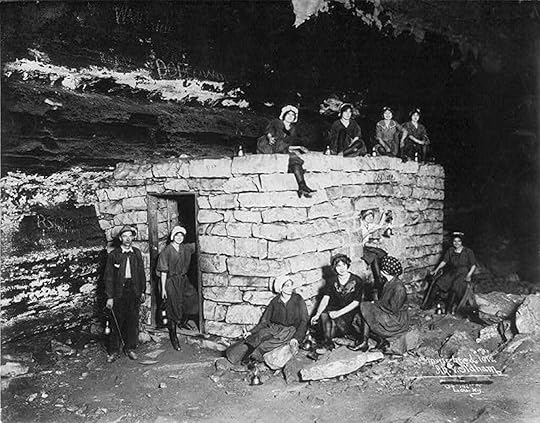 Patients and staff near a treatment room for patients with tuberculosis. Photo: Library of Congress/Public DomainPark: Mammoth Cave National ParkState: KentuckyDistance: .8 milesElevation gain: 40 feet
Patients and staff near a treatment room for patients with tuberculosis. Photo: Library of Congress/Public DomainPark: Mammoth Cave National ParkState: KentuckyDistance: .8 milesElevation gain: 40 feetAnchored by the longest cave system on earth, Mammoth Cave National Park has a reputation for ethereal encounters — so many that several park rangers wrote a book about the park’s otherworldly occurrences: Scary Stories of Mammoth Cave.
The subterranean wonder first opened as a tourist attraction in 1816, and a couple of decades later, physician John Croghan purchased the cave and created an underground sanatorium (place to treat chronic disease) for patients with tuberculosis. Five patients died in residence in just five months, and the subterranean facility closed after half a year in operation.
At the same time, a cave guide named Stephen Bishop was charting miles of the sandstone labyrinth using only a lantern. First brought to Mammoth Cave in 1838 as an enslaved man, Bishop spent nearly two decades exploring the cave system. And he accomplished quite a lot. Today, more than 420 miles of Mammoth Cave have been charted, although an estimated 600 miles remain unexplored.
Since the park opened 1941, rangers leading tours have reported encountering Stephan Bishop — suggesting the legendary guide may still be exploring the cave’s unchartered corners by lantern light. The park’s Heritage Trail is one of the most haunted trails in any US national park as the .8-mile route skirts the Old Guide’s Cemetery — Bishop’s final resting place.
Visitors can only go inside the actual Mammoth Cave as part of a guided tour. The Violet City Lantern Tour is guided only by lantern light for an extra spooky factor, but the Extended Historic Tour goes by the area where tuberculosis patients were treated (as well as “corpse rock,” where the deceased bodies were laid out for months).
The Transept Trail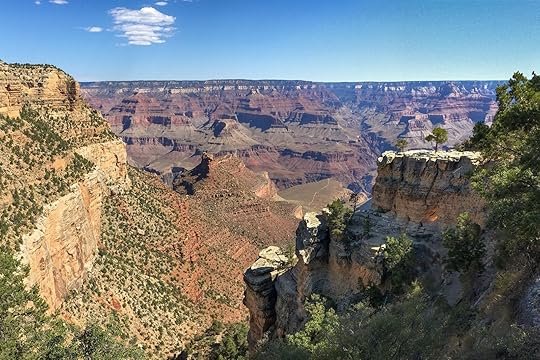
Photo: National Park Service/Public Domain
Park: Grand Canyon National ParkState: ArizonaDistance: 2.9 milesElevation gain: 280 feetDesignated as one of the planet’s seven natural wonders by the aptly named Seven Natural Wonders Foundation, the Grand Canyon is America’s most spectacular geological marvel. Forming the centerpiece of the Grand Canyon National Park, the two-billion-year-old chasm etched into the Colorado Plateau features in plenty of local legends.
Humans have inhabited the region since the last ice age, and today, there are still 11 tribes associated with the protected area. For more than a century, the jaw-dropping spectacle has also drawn tourists — and sometimes, visits have ended tragically. So naturally, there are a few haunted trails.
Along the Grand Canyon’s loftier North Rim, hikers and park rangers have reported encountering a bereaved apparition in a white dress wandering the Transept Trail and the site where the Grand Canyon Lodge once stood. The lodge, rebuilt after a 1932 fire, was tragically lost again in the 2025 Dragon Bravo Fire.
Nicknamed the “Wailing Woman,” the tearful specter is believed to have been a guest at the park’s original lodge — a getaway perched on the North Rim from 1928 until 1932, when it first burned down during a kitchen fire.
Although there is little historical documentation, anecdotes suggest the woman’s husband and child perished while hiking the Transept Trail, disappearing on a day when foul weather made conditions especially treacherous. And now, it’s known as one of Arizona’s most haunted trails. The trail clings to the edge of a ravine splintering off Bright Angel Canyon, extending from the lodge’s former footprint to the North Rim Campground — meaning there’s still a chance to encounter the footpath’s legendary spirit.
West Beach Three-Loop Trail
Photo: RonaldL/Shutterstock
Park: Indiana Dunes National ParkState: IndianaDistance: 3.4 milesElevation gain: 220 feetSpread along the southern edge of Lake Michigan, Indiana Dunes National Park is a patchwork of prairie grasslands, wildlife-rich wetlands, and forest-tufted sand dunes.
Today, the protected area is one of the most biodiverse national parks in the country. But a century ago, the wilderness was almost squeezed out by local industry. The region’s largest dune — the 200-foot-tall Hoosier Slide — was hauled away by glass manufacturers before 1920. When the area was finally protected as a state park in 1926 (and a national park in 2019) it was partially thanks to a vocal champion: Alice Mabel Gray — better known to history as “Diana of the Dunes.”
An intellectual who worked as a stenographer, Gray became disenchanted with her urban existence — so, on Halloween night in 1915, she boarded a train bound for the southern shore of Lake Michigan. Gray spent the remaining nine years of her life living beside the lake, studying native flora and fauna and becoming an advocate for the region’s fragile ecosystem. She died in 1925 under mysterious circumstances, but her fierce independence and defiance turned her into a local legend.
Today, visitors can walk in her footsteps on the Diana of the Dunes Dare — a self-guided interpretive loop at West Beach that celebrates Gray’s life and the landscape she fought to protect. The short route forms part of the larger West Beach Three-Loop Trail, winding through shifting dunes and offering clear views of the Chicago skyline across the lake. A portion of the loop is paved and wheelchair-accessible, and interpretive signs recount her story along the way. It’s a lovely place for a short stroll even without any unexplainable phenomena — though some visitors still claim to glimpse a woman in white drifting through the sand at dusk.
Traveling this fall? Check out Matador’s guides to the leaf-peeping season: The 14 Best Places for Leaf Peeping in United States in 2025 The Cutest A-Frame Airbnbs for a Perfect Holiday Season Escape in the Northeast 16 Haunted Airbnbs You Can Actually Spend the Night In This Halloween 16 Scenic Train Rides to See the Best Fall Foliage in the US New England’s Most Breathtaking Fall Foliage Road Trips The Most Wish-Listed US Cabins on Airbnb Spruce Railroad Trail
Photo: Sara Valenti/Shutterstock
Park: Olympic National ParkState: WashingtonDistance: 11.2 milesElevation gain: 400 feetOlympic National Park’s Lake Crescent has long inspired both legends and investigations. Covering the northern end of the Olympic Peninsula, the lake was once said to have formed when part of Mount Storm King collapsed during a great battle, burying the warriors below — a creation story passed through local lore.
In 1940, that mythic history collided with a grim reality. During the summer, a trout fisherman discovered an eerily preserved body floating in the lake. Dubbed the “Lady of the Lake,” the corpse was eventually identified as Hallie Latham Illingworth, a local tavern server who had disappeared in 1937. After three years underwater, her remains had taken on a waxy, soap-like texture — a result of natural saponification, where fats turn to a soap-like substance in cold, mineral-rich water.
Investigators traced the crime to her husband, Monty Illingworth, who was later convicted of her murder. Though the case was solved, park visitors still claim to spot Hallie’s spectral figure near the water’s edge, making the lakeshore one of Washington’s eeriest stretches of trail.
To follow the legend — and take in Lake Crescent’s sapphire-blue waters — trace the Spruce Railroad Trail, an 11.2-mile route that’s now fully restored, paved, and open to both hikers and cyclists. The trail follows a former rail bed and forms part of the Olympic Discovery Trail system, passing through two historic railway tunnels and offering constant views of the lake. It’s a beautiful, peaceful ride or walk — unless you happen to notice a shadow keeping pace along the water beside you.
Noland Creek Trail
Photo: John Brueske/Shutterstockl
Park: Great Smoky Mountains National ParkState: TennesseeDistance: 18.5 milesElevation gain: 2,500 feetStraddling the border between North Carolina and Tennessee, the Great Smoky Mountains National Park has plenty of nerve-rattling legends. After all, the Cherokee have lived in the mountain-rippled region for more than a thousand years. And European settlers descended on the Smokies beginning in the late 1700s. Remnants of these early inhabitants are sprinkled throughout the protected area, including ghost towns, former homesteads, and more than 200 cemeteries.
Around the same time the park was created, the Tennessee Valley Authority built Fontana Dam, flooding Fontana Lake in the process. When the lake filled with water in the early 1940s, more than a thousand residents were expelled. A road was promised through the park to provide access to historic homesites and graveyards to accommodate these displaced residents, but only six miles of motorway ever materialized.
Today, the route is known as the Road to Nowhere and is known for being one of Tennessee’s most haunted trails. Also called “Lakeview Drive,” this incomplete stretch spans approximately 6.5 miles but never reaches the north shore as intended. Hikers traversing the lake’s northern shore have reported observing a spectral settler who seems to be searching for someone. According to local legend, the lingering spirit is a settler who died looking for his missing daughter — and today, the apparition appears as a sphere of light, guiding hikers along the trail.
Search for the glowing orb on the Noland Creek Trail, north of Fontana Lake. The footpath passes both the Lower Noland Cemetery and the Upper Noland Cemetery within the first six miles, and while the full hike is too long for one day, there are plenty of backcountry campsites spread along the route.
Editor’s note: As of 2025, sections of Lakeview Drive and nearby trail access points are under temporary closure for road rehabilitation work. Check current park conditions before planning a hike.
Goler Canyon Road
Photo: NPS/Public Domain
Park: Death Valley National ParkState: CaliforniaDistance: 11 milesElevation gain: 3,500 feetThe largest national park in the continental United States, Death Valley National Park is a land of extremes. Cradled by the Amargosa and Panamint ranges, the park is renowned for mysterious phenomena — like the moving rocks and singing dunes.
But in the late 1960s, the vast protected area also harbored a cult-like troop of drifters led by Charles Manson. Nicknamed the Manson Family – yes, that Mason Family — the gang occupied the Barker Ranch site, a former mining camp turned rustic getaway for a few months in 1968–1969.
After damaging a handful of spots throughout the protected area — then designated as Death Valley National Monument — the squatters were arrested in early October of 1969 and charged with vandalism, arson, and auto theft. However, a few months later, four members of Manson’s gang were tied to a series of murders committed in Los Angeles during the summer of 1969. Victims included actress Sharon Tate, Folgers Coffee heir Abigail Folger, stylist Jay Sebring, and author Wojciech Voytek.
Today, hardy hikers can still make the 10.5-mile, out-and-back trek to the barebones hideaway used by the Manson family, following Goler Canyon Road into the Panamint Valley. It may not be one of California’s most famous haunted trails, but it’s at least one of the creepiest.
Corbin Cabin Trail
Photo: NPS/Public Domain
Park: Shenandoah National ParkState: VirginiaDistance: 2.9 milesElevation gain: 1,000 feetSpread over the flanks of the Blue Ridge Mountains, the hills and hollows of Virginia’s Shenandoah National Park are brimming with Appalachian legends. The park has more than 900 years of human history, meaning plenty of people lived in the mountains when park service protected the area in 1935.
In the early 1900s, George Corbin was one of these scrappy pioneers living in the area. He settled in Nicholson Hollow, carving out an existence farming fruit and grains and slinging home-brewed brandy during the dry days of Prohibition. But in the winter of 1924, his wife died during childbirth, and he again faced hardship when his family was among the more than 450 families evicted to form the park.
But today, Corbin’s sturdy cabin remains, maintained by the non-profit Potomac Appalachian Trail Club. From Skyline Drive (the motorway bisecting the national park), it’s just a short hike to the homestead. Hikers can even rent the cabin for the chance to sleep in the historical building — and for an extra-spooky addition, check out the family cemetery just down the trail from the historic homestead.
Canyon Rim Boardwalk Trail
Photo: Jon Bilous/Shutterstock
Park: New River Gorge National ParkState: West VirginiaDistance: .6 milesElevation gain: 90 feetWest Virginia’s New River Gorge National Park and Preserve might be the country’s newest national park, but the protected area is bisected by one of the oldest waterways on the planet—the New River. Once a hotbed for regional mining operations, the protected area is still scattered with the remains of abandoned railroad and mining towns, like Kaymoor and Thurmond.
The landscape also provided the backdrop for one of the most monumental engineering catastrophes in United States history — the Hawks Nest Tunnel disaster. In the spring of 1930, laborers began digging a tunnel through Gauley Mountain to channel water from the New River to a plant downstream. While excavating the sandstone mountain, workers were engulfed in clouds of silica dust — and very quickly plagued by a fatal lung disease, eventually diagnosed as silicosis.
Workers completed the tunnel in 18 months, but more than 2,900 of then, most African-American, died from silicosis in the months and years to come. Today, the national park’s New River Gorge Bridge is about 10 miles south of the Hawk’s Nest Dam. While it may not be known for being one of America’s haunted trails, it’s certainly a fascinating place to go to see the landscape and mountains the workers were tasked with drilling through.
For expansive views of the landscape and the third-highest bridge in the country, hike the short Canyon Rim Boardwalk Trail near the Canyon Rim Visitor Center. Visitors can also explore the ghost town of Thurmond on a walking tour or hike one of several trails around the abandoned coal-mining town.
Grouse Lake Trail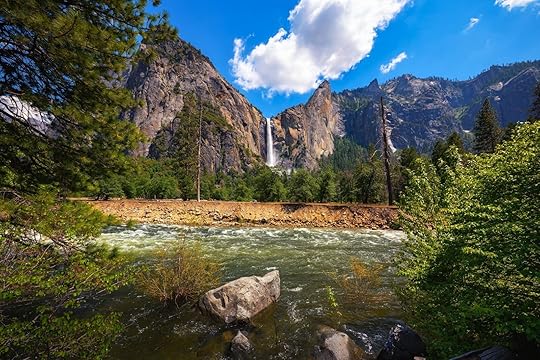
Photo: Nick Fox/Shutterstock
Park: Yosemite National ParkState: CaliforniaDistance: 19-20 milesElevation gain: 3,500 feetIn the summer of 1857, Galen Clark — Yosemite’s first official guardian — reported hearing high-pitched wails coming from deep in the forest near Grouse Lake. He initially believed the cries were from a lost dog. But when he asked local Ahwahneechee people, they told him the sound came from the spirit of a young boy who had drowned in the lake. According to legend, the ghost continues to call out to passersby, luring them toward the water’s edge.
The trail to Grouse Lake is a strenuous backcountry route that begins near Bridalveil Creek and covers nearly 20 miles round-trip through forested granite ridges. The route passes close to Bridalveil Fall, where local Ahwahneechee stories speak of Pohono — a malevolent wind spirit said to lure people toward the edge when the mist rolls in. The hike is remote and physically demanding, and due to its length and elevation gain, it’s recommended only for experienced hikers. 
October 4, 2025
New 2026 Flights Will Make Seeing Egypt’s Pyramids Easier Than Ever

Travelers from the US who have always dreamed of descending into a pyramid and visiting the land of the pharaohs are about to have even more chances to make that dream come true. EgyptAir, Egypt’s national airline, just filed plans to launch two new nonstop flights to Cairo from Los Angeles and Chicago, starting in 2026. According to the documents, the Los Angeles flight will start in May, followed by the Chicago flight in June. The cities will be the fifth and sixth gateway cities from North America, joining New York City, Toronto, Washington, DC (launched in 2019), and Newark (launched in 2023).
Though it’s not as well known within the US as other international airlines, EgyptAir has been in the US market since the 1980s and is currently the only airline offering nonstop service between Egypt and the US. Chicago’s O’Hare International Airport is a new destination for the airline, though the Los Angeles flight is technically not brand new, as it flew to LAX prior to 2001. The return of direct flights to Egypt via LAX after more than 20 years will streamline the trip for West Coasters, eliminating lengthy stops in destinations like Frankfurt or Dubai. It will be the airline’s longest flight, covering 7,606 miles over roughly 16 hours.

The new flights will help many US passengers avoid lengthy layovers in crowded airports like Frankfurt. Photo: Markus Mainka/Shutterstock
In 2019, Los Angeles and Chicago were among the top five most popular departure points for trips to Cairo, according to AirlineGeeks, and Chicago’s large Middle Eastern and African communities could provide a solid base of customers who frequently fly between the two countries. However, the choice of Los Angeles and Chicago could also be tied to the airline’s participation in Star Alliance, anchored by United Airlines in the US. O’Hare is a major hub for United, making for easy connections from other cities in the US.

Inside the new Grand Egyptian Museum. Photo: Tamer A Soliman/Shutterstock
Egypt’s ancient wonders may be eternal, but there are plenty of new draws planned for the country in 2026 and beyond. In late 2025 or early 2026, the massive Grand Egyptian Museum in Giza is finally set to open. It’s just outside of Cairo with views of the pyramids. At more than five million square feet, it will be the largest archaeology museum in the world. It was built to house the complete collection of treasures from King Tutankhamun’s tomb (roughly 5,000 artifacts), and will have nearly 100,000 total artifacts on display from ancient Egypt.
Well-known tourism and hotel brands are also expanding into Egypt. Uniworld recently launched new Egypt itineraries and ships, and Viking announced plans to have a dozen ships on the Nile by 2027. The Waldorf-Astoria brand plans to introduce a luxury Nile cruise in late 2026, the Four Seasons Hotel and Private Residences is expected to open in Cairo in 2027, and InterContinental Hotels Group (IHG) already announced future hotel developments in Cairo.
View this post on Instagram
A post shared by Emaar Misr (@emaarmisr)
New adventure resorts along Egypt’s Red Sea are opening on an ongoing basis as well. That includes the government-supported “Marassi Red Sea” project, an $18 billion development near Hurghada that will have private beaches, luxury hotels, and floating tourism offerings. The Red Sea’s reputation for clear water and healthy shark populations have continued to attract divers, especially given the relative affordability of liveaboard (multi-day) scuba diving boats.
More than 15.7 million tourists visited Egypt in 2024, surpassing the previous record of 13.9 million, set the year before.

Photo: MEDIAIMAG/Shutterstock
If you’re an American visiting Cairo for the first time, get ready for a mix of ancient wonder, chaotic streets, and sensory overload. If you fly into Cairo, you’ll probably want to start around the Giza Plateau. One full day is usually enough to see the main sites like the Great Pyramids of Khufu, Khafre, and Menkaure, and the Sphinx. You can visit on your own but tours are usually recommended, and full-day guides are fairly affordable (around $80 or so). Once the new museum opens, you’ll likely want to set aside a full day to explore that from top to bottom. There are tons of affordable Airbnbs around the pyramids, locally owned guest houses and B&Bs, and even luxury resorts from well-known international brands.
From Cairo, it’s only about one hour to Saqqara, where you can tour the 4,000-year-old Tomb of Mehu and see the Step Pyramid of Djoser, Egypt’s oldest pyramid. If you don’t mind a quick flight (about an hour) you can head to Luxor, home of the famous “Valley of the Kings.” On the East Bank are the Luxor Temple, the small-but-packed Luxor Museum, and the Karnak Temple Complex, dedicated to Egyptian god of creation Amun-Ra. The West Bank is where you’ll find the resting places of Ramses VI and King Tut in the Valley of the Kings, as well as the Temple of Hatshepsut and the 60-foot-tall Colossi of Memnon.

Visitors can go inside the tomb of Ramses V and VI Photo: Sergii Figurnyi/Shutterstock
If you’re up for a bit of relaxation, you’ll find lots of hot-air balloon tours, modern restaurants in major cities, and posh resorts in Red Sea towns like Sharm El-Sheikh. Or for a true once-in-a-lifetime experience, consider doing a multi-day cruise on the Nile — some cruise companies even have on-board Egyptologists for guests eager to learn as much as possible about the fascinating country. 
October 3, 2025
Drift Into SoCal’s Coastal Bliss at This Breezy Hotel and Spa in ‘Surf City USA’

This trip was my first time being away from my nine month old. I was feeling a little nervous as my Uber pulled up to the entrance of Paséa Hotel & Spa in Huntington Beach, a small, surf-famous city a little south of Los Angeles. But between the valet who greeted me at the car, the woman who checked me into the hotel, and the cleaning staff I passed on the way up to the room, everyone seemed so genuinely happy to be there that I instantly felt more present.
This ended up being a theme over the course of my weekend-long stay at Paséa. Perhaps it’s the New Englander in me, but it felt like the entire place exuded that “California cool” that you hear so much about. The pool attendants, the restaurant servers, the spa staff — they were all as friendly as you might expect someone who lives and works in “Surf City USA” to be. That sense of ease and enjoyment lent an intangible charm to the overall guest experience.
Dreamy sheets and oceans views: The rooms at Paséa Hotel & Spa
Photo: Paséa Hotel & Spa
Paséa has a few different room styles, including 10 ADA-compliant rooms out of the 250 total rooms. The styles range from standard rooms with oceanfront or partial ocean views to studios, one-bedroom suites, and a penthouse. All of them have at least one thing in common: a design scheme that immediately lets you know you’ve arrived someplace beachy and accordingly relaxing, with artwork and carpeting that reflect the waves outside (save the wood flooring in the penthouse) and a color palette so light and neutral that it makes even the sand pop.
All of the rooms offer a degree of hominess — with features like Keurig machines, streaming-capable Smart TVs, and ergonomic chairs at the in-room desks — but the 1,900-square-foot penthouse levels up the feeling of being home away from home. In addition to amenities like the two private balconies and the Toto toilet and soaking tub in the bathroom — not to mention a whole other bathroom with its own ADA-accessible bathtub — the penthouse comes with a kitchenette on request, a dining table with room for six, and a living room with a sleeper sofa to accommodate various guest configurations.
Whether or not you splurge for the penthouse, there’s one luxury that the Paséa affords all of its guests: insanely comfortable sleep. In my opinion, one of the most critical components to a great hotel stay is the bed, and Paséa delivered. I met with the hotel’s Director of Operations while I was there, and he shared that his team spent weeks meticulously hand selecting all of the hotel’s recently upgraded beds and Frette linens. While I can attest that the level of comfort was top notch, the piece de resistance that truly differentiates lounging in bed at Paséa versus in the comfort of your own home is the views of Pacific waves crashing lazily along the coast.
Pool days and spa escapes: Amenities at Paséa Hotel & Spa
Photo: Paséa Hotel & Spa
At first glance, Paséa seems to have a younger clientele than some of the other hotels and resorts in the area. Legacy chains often attract families and older travelers with brand loyalty, whereas you might expect that a hip spot like Paséa to have more of a party atmosphere, although this couldn’t be further from the truth. Just look at the Ninth Island Pool.
Located in the heart of the hotel, Paséa’s Ninth Island Pool is the first thing you see when you arrive and look out beyond the lobby. Once again, the vibes here are just right. With access to super plush complimentary towels, poolside daybeds and in-pool loungers, a hot tub and wading pool, and a dedicated menu for poolside food and drink — all with a gorgeous panoramic backdrop of the Pacific Ocean — the Ninth Island Pool is the ultimate hangout.
For those looking for a semi-private space for a relaxed group hang, poolgoers have the option to rent a cabana for the day, where you can lounge in the shade and have access to a stocked mini-fridge and TV. I went to the pool more than once during my stay and got to spend some time both in the cabanas and regular poolside loungers. For my purposes the poolside loungers were sufficient, but the cabanas add another dynamic to the idea of lounging. Paséa also arranges transportation to the beach and has guests covered with equipment like chairs, umbrellas, and towels for when you prefer a beach day to a pool day.
The laidback energy I noticed on arrival and that carried to the Ninth Island Pool were cemented as soon I stepped into Aarna Spa. As anyone who’s ever had to care for children might understand, the primary goal for my weekend sans baby was to relax and rejuvenate. Paséa’s award-winning Balinese-inspired spa was the recipe for exactly that, offering massages, facials, and other spa treatments. Booking a service also grants you full-day access to all of the other spa amenities, including the jacuzzi, sauna, steam room, relaxation room, and spa garden.
I had the good fortune of enjoying an exquisite 50-minute Swedish massage the morning of my last day, after which I took a dip in the jacuzzi and spent some time in the sauna room. I then came back in the afternoon for an Arcona-exclusive facial offered in the spa’s boutique as part of a brand activation for one of the boutique’s product lines. The whole experience left me feeling pampered and rested, and it was a great way to cap off a wonderful weekend before heading home early the following morning.
A standout restaurant and rooftop lounge: Dining at Paséa Hotel & Spa
Photo: Malena Gatti
One of Paséa’s highlights — if not its biggest draw — is Lorea, the hotel’s open-air oceanfront dining experience. Debuted last year as the crown jewel of a $5 million renovation, the restaurant has an impeccable yet playful menu, conceptually inspired by land and sea with a variety of interactive concepts like tableside-poured clam chowder, edible candles made from Turkish chili-lime butter, and a dry ice peach cobbler dessert.
At first thought, you might imagine that this sort of thing could be gimmicky, but the attention to detail and quality was refreshing: for example, the oshizushi (a traditional style of pressed sushi from Osaka) is served semi-deconstructed with toasted nori sheets on the side. According to Lorea’s Executive Chef, Scott Rackliff, “This is an intentional decision to preserve the crisp texture of the nori, allowing guests to dine at their own pace, enjoy their company and experience while not compromising the quality of the food.”
It’s hard to say what my favorite dish was because, truthfully, everything was incredible. Lorea’s commitment to incorporating locally sourced, seasonal ingredients means that about half of the menu changes three to four times per year. One of the most memorable bites I had was the spicy pork gyoza. I’d never tried fermented black beans before, but it might be my new favorite ingredient. This dish uses them two ways: dried and incorporated into the house chili crisp and ground into a powder, which you can drag the gyoza through before eating it.
The carrot cake was another standout. Chef Rackliff shared that he used this very recipe to snag his last three jobs. To put it in perspective, I flew home — all the way across the country to Rhode Island — with some leftovers so that my husband, a man who has never ever voluntarily eaten carrot cake, could try it. His response: “Okay, yeah, this is really good.”

Photo: Malena Gatti
I also stopped in for breakfast one morning, and that meal was equally as good. I ordered the smoked salmon flatbread and the oats and berries — both were delicious. I know what you’re thinking: Can oatmeal really be delicious? Surprisingly, the answer is yes.
Paséa’s other upgrade during the 2024 renovation went toward its rooftop lounge, Treehouse on PCH, which I had the pleasure of enjoying on the first night of my stay. With its firepit lounge seating and panoramic views of the Huntington coastline, I can see how this would be a popular hangout for both visitors and locals.
There’s quite a bit of overlap with Lorea in the menu offerings, which is hardly a negative. Of all the things I tried here, the tempura fish tacos were my favorite. I also tried Treehouse’s signature drink, the Pink Flamingo, which I’d recommend for anyone who likes mezcal. It’s complex and lime-forward, and while I’m usually not a fan of spicy drinks, this one felt well balanced, and I don’t think it would have been as good without the inclusion of the Thai-chili-infused Aperol.
Beach days with butlers: Things to do near Paséa Hotel & Spa
Photo: Malena Gatti
There’s a reason Huntington Beach is known as “Surf City USA.” Spending a day at the beach, whether taking a surfing lesson or simply taking in the view, is a must-do while you’re in town. I didn’t personally try my hand at surfing (though the concierge at the hotel would have been more than happy to point me in the right direction for a lesson). But I did enjoy an afternoon at the beach, which was made all the more enjoyable by the fact that Paséa’s beach butler pedicab service not only drove me down there but also carried down complimentary chairs and an umbrella and set them up for me.
I was even able to pick up a picnic basket from Lorea and enjoy one of the best turkey club sandwiches with salt and vinegar chips I think I’ve ever had (something about eating a sandwich and chips at the beach just hits different). Nighttime beach hangs also seem to be a thing here, as Huntington Beach currently has 500 fire pits at various locations along the beach, both on a first-come-first-served basis and by reservation.
Another option for taking in Huntington Beach’s world-famous oceanfront is picking up some of the hotel’s bikes (or renting an e-bike from a local shop like I did) and cruising along the Pacific Coast Highway (PCH) boardwalk area. The sights couldn’t be more quintessentially California, and there’s plenty of cool things to see along the way — from Dog Beach, which hosted last year’s SoCal Corgi Beach Day, to Huntington Beach Pier and all the different beach concessions along the way.
Getting to Paséa Hotel & Spa
Photo: James Kirkikis/Shutterstock
For those planning to fly in for their stay, there are two airport options: Los Angeles International Airport (LAX), which can be a 1- to 2.5-hour ride depending on traffic, or the smaller and closer Long Beach Municipal Airport Daugherty Field (LGB), which takes about 30 minutes without traffic. For those driving, Paséa is located right along the PCH, smack dab in the heart of Huntington Beach, about halfway between Laguna Beach and Long Beach. 
This 2-in-1 Hotel in the Hottest Place on Earth Radiates Old-School Cool

When most people think about Death Valley — home to the lowest point in California and the record-holder for the highest air temperature ever registered at a whopping 134 degrees Fahrenheit — they picture blistering heat, cracked salt flats, and a “why would anyone go there?” reaction. But driving in from Las Vegas, I found something unexpected: a palm-lined retreat shimmering against the desert backdrop. After hours of rust and gold terrain, the Oasis at Death Valley feels almost mythical, a place where luxury shouldn’t exist, and yet it thrives.
I spent a long weekend at the resort, where mornings began with sunrise yoga in a palm garden, and nights ended with stargazing under one of the darkest skies in the US. In between came hikes through marble canyons, dips in spring-fed pools, and meals that reminded me that remote doesn’t have to mean limited.
Old Hollywood restored: The rooms at the Oasis at Death Valley
Photo: David Duran
Guests of the Oasis at Death Valley can choose between two on-site hotels: the intimate Inn at Death Valley and the family-oriented Ranch at Death Valley. I stayed at the Inn at Death Valley.
Checking into The Inn feels like stepping onto the set of a Golden Age film, which makes sense considering it’s been open since 1927. (The Ranch opened in 1933.) Spanish Mission-style architecture wraps around manicured gardens, and stone patios frame views of the Panamint Mountains. Wooden beams, wrought-iron details, and a color palette of sand and stone create harmony with the landscape. Throughout the property, the architecture and local artwork nod to the region’s cultural history.
The polished and refined Inn at Death Valley carries a AAA Four-Diamond rating, which signifies “distinctive fine dining” and “well-serviced amenities amid upscale ambience,” according to AAA. There are 66 rooms, plus 22 luxurious casitas that were added to the property as part of a multimillion-dollar renovation project. My room opened onto a shaded terrace that offered a welcome escape under the desert sun.
Sustainability runs through the property in quiet but meaningful ways, including the fact that guest rooms use refillable toiletry systems to cut down on plastic. (A traveler tip: bring a reusable water bottle, since filling stations across the resort make it easy to stay hydrated without plastic waste.) Accessibility is also a focus. Ramps, wide pathways, and mobility aids help to open the resort to travelers with different needs.
The Ranch — the larger sister property just down the road with 275 rooms and 80 cottages — offers a more casual, adventure-focused option closer to Death Valley National Park’s Furnace Creek Visitor Center. At The Inn, though, it’s the details that linger, like the blackout curtains and eco-friendly toiletries that make it feel like Hollywood indulgence reimagined for today.
Pools, wellness, and the darkest sky: Amenities at the Oasis at Death Valley
Photos: David Duran
Golf and wellness are two of the main on-property draws at the Oasis at Death Valley. The golf course claims the title of being the “lowest elevation” place to play 18 holes in the world, but if you ask me, the property’s real showstoppers are the historic spring-fed pools.
The pools at both The Inn and The Ranch are consistently kept at a perfect 87 degrees Fahrenheit and are fed by a renewable spring that has flowed for centuries. Clark Gable and Carole Lombard once swam in The Inn’s pool. I, too, found myself floating there under palm shade, completely at ease in the warm spring water.
The next morning, I unrolled my mat in the Mission Gardens for sunrise yoga, watching the sky shift from indigo to orange as the valley woke up. Later at The Inn’s Wellness Sanctuary, I indulged in a desert-inspired massage, along with a men’s beard wash with a leave-in conditioner, and a treatment that left my face glowing.
At night, the focus turns upward. Death Valley is the largest certified Dark Sky Park in the US, and The Oasis has worked with the National Park Service to reduce light pollution, ensuring that future travelers will see the same star-studded skies I did. From the Stargazer’s Terrace, I watched the Milky Way arc across the sky from the 270-degree vantage point, and it really made me realize how rare true darkness is in other places.
From root beer floats to fine fare: Dining at The Oasis at Death Valley
Photos: David Duran
Food at The Oasis runs the gamut from nostalgic to refined, with seven different dining venues ranging from an upscale dining room and poolside eats at The Inn to a buffet restaurant and grab-and-go cafe at The Ranch. What surprised me most was that every restaurant had at least one plant-based option. The menus also emphasize regional produce like dates and citrus, so eating well in the desert couldn’t have been easier.
At The Inn Dining Room, breakfast meant stacks of date pancakes and thick slices of the resort’s famous date nut bread — sweet, dense, and worth the trip alone. Dinner brought dishes like braised short ribs served with panoramic views over the valley. Between dips at the pool, the Pool Café served wraps and fresh salads, while the retro Ice Cream Parlor at The Ranch had me rediscovering the joy of a root beer float (with vegan vanilla, of course).
For something heartier, I headed to The Ranch’s Last Kind Words Saloon, a steakhouse wrapped in Old West nostalgia. There, taxidermy, antique firearms, and ribeye steaks meet craft beers and whiskey flights. The Ranch’s newest addition, the Wild Rose Tavern, is a great option for lunch (especially after a round of golf) with bites like spinach and artichoke dip, Caesar salad, Bavarian pretzels, and a handful of sandwiches and wraps. Whatever your mood, the variety means you can eat differently each night without ever leaving the property.
Things to do in Death Valley
Photos: David Duran
Part of The Oasis’s appeal is that it sits inside Death Valley National Park. Within minutes, you can reach Zabriskie Point for sunrise or Badwater Basin — the lowest point in North America, where surreal salt polygons stretch to the horizon.
For me, the highlight was Mosaic Canyon. Even in the heat, the short hike felt manageable and rewarding. The narrow marble walls, smoothed and polished by flash floods, glowed in shades of cream and gold. It was the kind of hike where every turn feels photogenic and every step satisfying.
No trip is complete without a stop at the Furnace Creek Visitors Center, where I joined the line of travelers snapping photos with the world-famous thermometer. It’s part kitsch, part tradition, but entirely fun. One evening, I returned to Badwater Basin at sunset and stood on the salt flats as they glowed pink under the fading light. It was one of the most surreal travel moments I’ve ever had.
Closer to the resort, the Borax Museum, the oldest structure in Death Valley, offers a crash course in the valley’s mining history with antique stagecoaches and rusted tools, tying today’s luxury escape to the region’s rough-and-ready past.
Getting to the Oasis at Death Valley
Photo: David Duran
Despite its reputation for remoteness, Death Valley is only a two-hour drive from Las Vegas. The journey itself becomes part of the adventure, the desert unfolding in waves of red and gold before the sudden green of The Oasis appears on the horizon. My advice: bring plenty of water, download offline maps, and savor the transition from desolation to oasis. 
17 Airbnbs in London’s Trendiest Neighborhoods

There’s a lot to love about London — one of the world’s most beloved concrete jungles: easy access to international cuisines, a thriving arts culture, and many historical landmarks. Start a trip in Central London with shopping on Oxford Street and pub hopping in Soho. From there, head in any direction to explore because the best things about London live outside of zone one. In North London, spend the day in Camden chowing down on dishes from around the world and walking along the Regent’s Canal. Or head to Brixton in South London for live music at Electric Brixton or drinks at Lost In Brixton — a hidden rooftop paradise. A visit to East London without going to Shoreditch might be a sin. Grab drinks at BoxPark Shoreditch and shop with local vendors at Spitalfields Market. With so much to do you need a safe and comfortable place to stay and that’s where an Airbnb London rental steps in.
Whether you’re planning a weekend getaway during a Eurotrip or you’re looking to explore London longer term, here are 18 great Airbnb London rentals to make your stay incredible.
We hope you love the Airbnb London rentals we recommend! Just so you know, Matador may collect a small commission from the links on this page if you decide to book a stay. Listed prices are accurate as of the time of publication.
The best Airbnbs in North LondonThe best Airbnbs in South LondonThe best Airbnbs in West LondonThe best Airbnbs in East LondonThe best Airbnbs in Central LondonThe best Airbnbs in North LondonHome to buzzing areas like Camden, where bars and food are abundant, and St. John’s Wood, where days are spent along the canal, there’s a lot of experience to have in North London. Don’t miss grabbing a bite at the outdoor Camden Market or pulling up a seat at the luxurious Ivy Cafe. Just a hop away from Islington is Kentish Town o2, where live music is always happening.
Camden
 Photo: Airbnb
Photo: Airbnb Photo: Airbnb
Photo: Airbnb Photo: Airbnb
Photo: AirbnbPiers’ stylish place in Camden is tucked away on quiet Regency Street. You’ll get to sleep and sip tea in peace here without being too far away from the buzz of Camden. The entire space is well-lit, giving it a bright, airy feel alongside the soft wooden details. After a long day of shopping along the high street, cozy up on the all-white couch in the open living space and sleep easily on the plush mattress in the ensuite bedroom. When you decide to leave the plushness of this place, the underground station is just five minutes away and steps from Camden Market, shops, and restaurants.
Two guests, one bedroom
$170 per night
Islington
 Photo: Airbnb
Photo: Airbnb Photo: Airbnb
Photo: Airbnb Photo: Airbnb
Photo: AirbnbThis tree-lined oasis is perfect for solo travelers exploring London. The ensuite bedroom is comfy with a king bed and private terrace ideal for morning espresso sips. Micci’s place brings a beach house feel to London with vibrant orange linens, wood accents, and near floor-to-ceiling windows. Islington’s Upper Street is just outside the door where you’ll find plenty of coffee shops, bars, and restaurants to try some of London’s best bites — like the Mediterranean dishes at Fig & Olive. Plus, your London home is just a few train stops away from neighborhoods like Dalston and Shoreditch.
One guest, one bedroom
$87 per night
South London is home to some of the city’s best food and unique shops with an authentic community feel. Brixton and Peckham are full of life, and Caribbean culture is abundant. Meanwhile, Greenwich has classic London instructions like the Royal Observatory.
Brixton Photo: Airbnb
Photo: Airbnb Photo: Airbnb
Photo: Airbnb Photo: Airbnb
Photo: AirbnbBrixton is full of life, and so is this colorful, bright blue-doored apartment in the heart of town. The main living space features large bay windows of maximum natural light and a red accent wall with a painting of former Londoner Jimi Hendrix. There’s also a dining area with a view, perfect for meals for four people made in the full kitchen. The bedrooms are homey and functional with more natural light, bookshelves, floor-length mirrors.
Outside your door, stroll down Electric Avenue to check out the open-air food market, local shops, and Brixton Village–a street market with food and clothes vendors. Don’t leave Brixton Village without heading upstairs to Lost In Brixton, a hidden paradise of a cocktail bar with Latin American-inspired sips.
Four guests, two bedrooms
$246 per night
 Photo: Airbnb
Photo: Airbnb Photo: Airbnb
Photo: Airbnb Photo: Airbnb
Photo: AirbnbTravel back in time with this 1950s retro apartment in the heart of Greenwich. Funky decor, white and black tiled walls, and many wood finishes make this stylish place feel like home right away. The living room is bold and comfortable with a sectional couch and red leather chaise and functional with a dedicated workspace. Davey’s place has two large double-bed bedrooms that are simple and have a bit of London-inspired decor. Here you’ll be just a short walk away from Greenwich Market–perfect for eating, antique shopping, and people watching–and the famous Greenwich Observatory.
Four guests, two bedrooms
$198 per night
 Photo: Airbnb
Photo: Airbnb Photo: Airbnb
Photo: Airbnb Photo: Airbnb
Photo: Airbnb Photo: Airbnb
Photo: AirbnbHave a relaxing stay at this South London Airbnb. This quaint cottage is in the village of Newby/ Clapham and is nestled under Ingleborough. The cottage has a cozy living room, a fully equipped kitchen, and a full bedroom and bath. This cute cottage gives you that remote and relaxing feel that everyone is looking for. The Lake District is only a 30-minute drive, while the Carlisle railway is six miles.
Four guests, two bedrooms
Price: $125 per night
 Photo: Airbnb
Photo: Airbnb Photo: Airbnb
Photo: Airbnb Photo: Airbnb
Photo: Airbnb Photo: Airbnb
Photo: AirbnbStay at this charming London Airbnb in Camberwell. This flat features London ceilings and large windows, with an open floor plan with the living room, kitchen, and dining area. You can access a large balcony from the living room and one of the bedrooms. The space is only two miles south of the Thames and near many local restaurants, pubs, and wine bars.
Four guests, two bedrooms
Price: $242 per night
No trip to London is complete without visiting these beloved West London neighborhoods. They are worth exploring, from antique shopping at Portobello Road Market in Notting Hill to polished cafes in Chelsea. And South Kensington has some of the best shopping in town.
Notting Hill
 Photo: Airbnb
Photo: Airbnb Photo: Airbnb
Photo: Airbnb Photo: Airbnb
Photo: Airbnb Photo: Airbnb
Photo: AirbnbAre you looking for the perfect home base to explore London? Then this bright spacious apartment is the place for you to be. This spacious apartment has a fully equipped kitchen and a bright living room leading to the dining area and patio. This apartment is conveniently located near local bars, gastro pubs, restaurants, boutiques, and more Notting Hill attractions.
Four guests, two bedrooms
Price: $387 per night
 Photo: Airbnb
Photo: Airbnb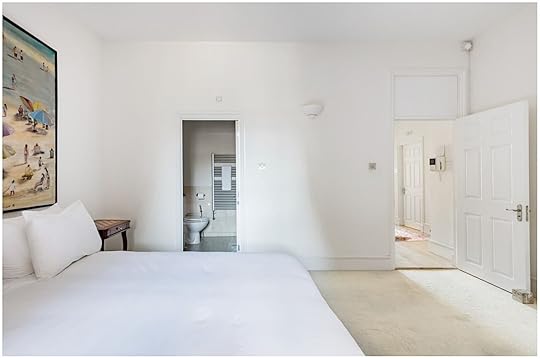 Photo: Airbnb
Photo: Airbnb Photo: Airbnb
Photo: AirbnbThis bright Edwardian townhouse is tucked away on a quiet street in the heart of South Kensington. Mo’s place is warm and eclectic, with a cozy living room featuring light wood floors, high ceilings and tall windows, and a framed stamped collection. After exploring London, the dining area features a long wood oak-like table perfect for homemade dinners for four. Nothing seems out of place here while still feeling cosmopolitan and down to earth.
Bedroom one is ensuite and features high ceilings and a king-sized floor mattress. Bedroom two has two single beds perfect for those wanting their own sleep space. And there’s a small balcony here, great for having a cup of tea in the mornings. The apartment is steps away from the Natural History Museum and the Victoria and Albert Museum–well-loved London institutions.
Five guests, two bedrooms
$579 per night
 Photo: Airbnb
Photo: Airbnb Photo: Airbnb
Photo: Airbnb Photo: Airbnb
Photo: AirbnbThis pastel brick townhouse sits on a beautiful row of color in downtown Chelsea near Sloane Square. Perfect for medium groups looking for a luxurious and comfortable stay in the big smoke. The decor is well designed with soft hues, fine art, a glass mirror wall, and homey details like the living room’s electric fireplace. The elegance continues into the bedroom and bathrooms, especially. There’s a clawfoot tub, rainfall showerheads, and vessel sinks.
Beyond the beauty of this space, the apartment is well connected to some of Chelsea’s best hotspots. On the week, head to Chelsea Farmers Market and brunch at Bluebird.
Seven guests, two bedrooms
$2,554 per night
 Photo: Airbnb
Photo: Airbnb Photo: Airbnb
Photo: Airbnb Photo: Airbnb
Photo: AirbnbHere’s the perfect London retreat for a solo or couple’s trip. This refurbished London apartment is nestled in the heart of London in a former Georgian house. This home features a fully equipped kitchen, spacious living room, and cozy bedroom. This space is near the main shopping areas, restaurants, and bars.
Two guests, one bedroom
Price: $272 per night
 Photo: Airbnb
Photo: Airbnb Photo: Airbnb
Photo: Airbnb Photo: Airbnb
Photo: Airbnb Photo: Airbnb
Photo: AirbnbThis West London Airbnb is by the river and a walk from Kew Bridge station. This modern apartment has a well-equipped kitchen, living area, bedroom, and a balcony that shows off the stunning river views.
Three guests, one bedroom
Price: $213 per night
The cooler cousin of the city, East London, has an effortless cool that can be felt with one step in Dalston, Shoreditch, Hackey, or Bethnal Green. They’re all full of bars and local restaurants. It’s also the perfect place for popping into local art exhibitions or hanging out at breweries like London Fields Brewery.
Dalston Photo: Airbnb
Photo: Airbnb Photo: Airbnb
Photo: Airbnb Photo: Airbnb
Photo: AirbnbLocated in one of East London’s coolest neighborhoods, this bright garden home in Dalston is one of the best Airbnb London rentals. The apartment is mid-century modern meets planetarium. The hues are rich, warm, and inviting–an oasis of calm your host, Dewi, explains. From the wood fireplace to original detailed ceilings, this place is a must-stay in Dalston. Natural light pours into every room, and bright yellow, orange, and chartreuse accents in the bedroom, kitchen, and bathroom are sure to catch your eye. Perfect for a small couple of friends or couples, end your nights in the back garden with some local takeaway and drinks.
When you’re ready to explore, check out these Dalston highlights: watch a film at Rio Cinema, chill with freshly made pizza at Dalston Curve Garden, and dance to 80’s pop at Ridley Road Market Bar.
Four guests, two bedrooms
$266 per night
 Photo: Airbnb
Photo: Airbnb Photo: Airbnb
Photo: Airbnb Photo: Airbnb
Photo: AirbnbSleep in a converted warehouse loft in London’s beloved Shoreditch neighborhood. Despite the building’s historical past, the interior decor gives it a modern, contemporary feel. The space has warm timber flooring and features the original exposed brick walls. The bedrooms are decorated with white linens, wooden headboards, and wall plants. The bathroom offers a boutique hotel feel with black matte hardware and marble-tiled walls, and an intimate outdoor patio sits between the living area and bedrooms.
And because Branca’s place is centrally located, you’ll be a stone’s throw away from all the best bars, restaurants, and rooftops along Shoreditch High Street and the Spitalfields area.
Four guests, two bedrooms
$334 per night
 Photo: Airbnb
Photo: Airbnb Photo: Airbnb
Photo: Airbnb Photo: Airbnb
Photo: Airbnb Photo: Airbnb
Photo: AirbnbThis retro-themed condo is the perfect spot for your London getaway. This Airbnb in East London has a spacious living room with a pull-out couch, a modern monochrome kitchen, and a cozy bedroom. This condo is in London’s most diverse and lively neighborhoods, such as Broadway Market, Dalston, and Shoreditch, and it’s near many shops, restaurants, and bars.
Two guests, one bedroom
Price: $147 per night
 Photo: Airbnb
Photo: Airbnb Photo: Airbnb
Photo: Airbnb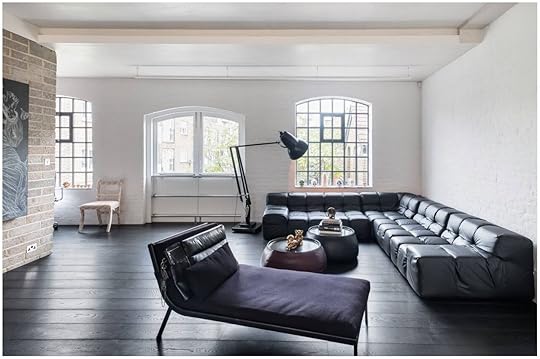 Photo: Airbnb
Photo: AirbnbTucked behind the quiet cobbled mews in Bethnal Green, this Airbnb London rental is a place of monochrome dreams. This place has the ultimate modern feel, from the black quilted corner sofa to the white brick walls. Contemporary art hangs on the walls, and a matte black bookcase hugs the corner. This warehouse-style Airbnb is open, airy, and minimalistic. Perfect for a solo traveler or a pair, the bedroom features a king-size bed facing floor-to-ceiling windows. And the bathroom is luxurious with a white clawfoot tub and silver hardware finishes. On Sunday morning, stroll over to Victoria Park for banana nut pancakes at Pavillon Cafe.
Two guests, one bedroom
$467 per night
Central London is home to some of the city’s top attractions and the best shopping, like on the iconic Oxford Street. A stay in Victoria, Mayfair, or Soho, means you’ll be close to famous museums and age-old pubs.
Mayfair Photo: Airbnb
Photo: Airbnb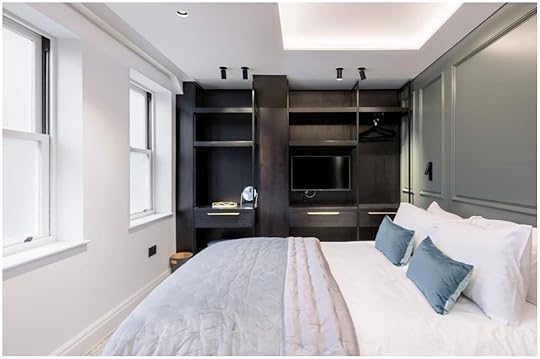 Photo: Airbnb
Photo: Airbnb Photo: Airbnb
Photo: AirbnbMinimalism reigns supreme at this elegant Airbnb in London’s Mayfair neighborhood. Luxury is everywhere, from velvet gray and gold armchairs to rich marble details. The muted hues in the apartment are understated in the best way so that the architecture and design can shine. There are Juliet balconies and gold-trimmed bedroom cabinets. There are marble walls, gold accents, and a standing glass rainfall shower in the bathroom. Jade’s centrally-located place has easy access to shopping around Mayfair and on the famous Oxford street.
Four guests, two bedrooms
$874 per night
 Photo: Airbnb
Photo: Airbnb Photo: Airbnb
Photo: Airbnb Photo: Airbnb
Photo: Airbnb Photo: Airbnb
Photo: AirbnbThis stylish East London Airbnb is situated in the most sought-after residential area. This newly redecorated apartment features an open-plan lounge, kitchen, and dining area. Enjoy the private patio and make the most of the beautiful London weather. Get outside and explore London as the apartment is just steps from tubes, High Street Ken, Hyde Park, restaurants, museums, and more.
Five guests, two bedrooms
Price: $187 per night
Matador Network's Blog
- Matador Network's profile
- 6 followers



